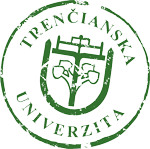Scaffolds and biocomposites for tissue regeneration – new project approved

We are pleased to inform our colleagues, friends and partners about the approval of project application submitted within bilateral scientific cooperation between Slovak Academy of Sciences and National Science Council, Republic of China (Taiwan). Prof. Ing. Dušan Galusek, DrSc., Director of FunGlass, is the project leader, blending together mutual cooperation between Department of Biomaterials of the Centre and two partners Prof. Wei-Hsing Tuan, National Taiwan University and Prof. Shao-Ju Shih, National Taiwan University of Science and Technology.
Bioactive glasses are proposed to be osteoconducive more than any other bioactive materials used for the treatment of bone imperfections and fracture. The artificial three-dimensional (3D) scaffolds help to overcome the inflammability and reduce negative impact sometimes occurring when utilizing the natural harvested bone grafts. Recent research activities are aimed at development of 3D scaffolds with features and structure similar to naturally growing human bone. The main aim of the proposed project is therefore preparation of three-dimensional (3D) bioglass scaffolds for treatment of bone disturbances.
The project duration is planned for the period 2019-2021. Prof. Ing. Dušan Galusek, DrSc., Director of FunGlass explains challenges of the project:
„The successful preparation of such scaffolds involves several challenging steps. The project covers all stages of the 3D scaffold fabrication. (1) Preparation of the starting powders in the nano- or submicron- range via the spray pyrolysis and conventional glass melting/quenching procedure followed by flame synthesis. Attention will be paid to variation of bioglass composition, where therapeutic inorganic ions will be incorporated into standard 45S5 or 13-93B3 bioglass in order to improve osteogenesis and enhance mechanical properties. (2) This step will be followed by preparation of defect free green body by additive manufacturing (3D printing) and tape casting techniques, followed by (3) optimisation of the burn-out and sintering steps for the 3D scaffolds. (4) The last step includes in vitro testing of the materials for the formation of hydroxyapatite and final mechanical testing of 3D scaffolds and their comparison with the cortical human bone.“












